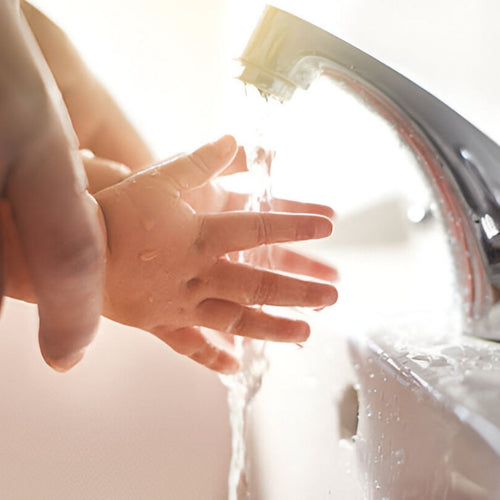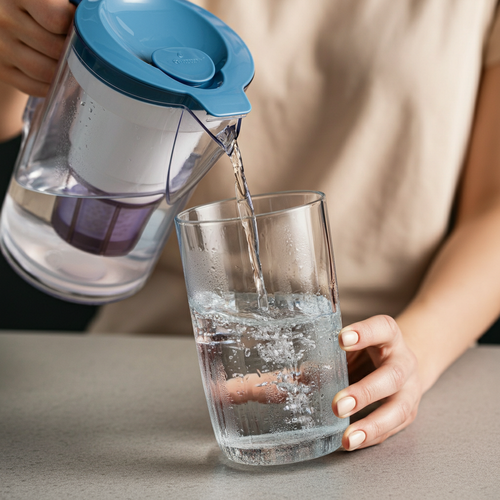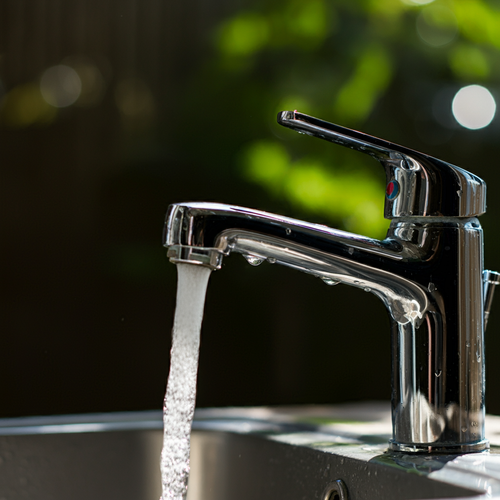If you live in a region with freezing winters, winterizing your water softener is essential to protect it from costly damage. A water softener is a household appliance that removes hardness minerals like calcium and magnesium from your water supply, giving you the benefits of softer water. Winterizing involves taking steps to prevent the water inside your softener's tanks and components from freezing, expanding, and potentially causing cracks or leaks.
Soft water is a significant upgrade for any home. It extends the life of appliances like washing machines and water heaters, prevents soap scum and mineral buildup in showers, and leaves your skin and hair feeling softer. A water softener represents a considerable investment in your home's comfort and efficiency. Ensuring it's protected during harsh weather with proper winterization means you'll continue to enjoy the benefits of softened water for years to come.
Why Winterize Your Water Softener?
Can a water softener freeze and get damaged?
Yes, water softeners are absolutely susceptible to freeze damage. The primary components at risk are the resin tank (where the water softening process occurs), the brine tank (which holds salt for regeneration), and the valves and lines that connect the system. Water, like most substances, expands when it freezes. If temperatures drop below freezing and there's water inside your softener, this expansion can put immense pressure on the tanks and components, potentially leading to cracks, leaks, or even complete system failure.
Potential Consequences
Ignoring winterization could have costly consequences. Freeze damage might necessitate replacing individual parts, or worse, require an entirely new water softener system. This is far more expensive and disruptive than taking preventative steps for winterization.
Think of winterizing your water softener as a form of insurance. The cost of insulation, a heater, or even professional services for winterization pales in comparison to the price of repairs or replacements caused by freezing.
When to Winterize Your Water Softener
At what temperature should I winterize my water softener?
The primary factor is the local weather. You should winterize your water softener when temperatures in its location consistently dip below freezing (32°F/ 0°C). Don't wait until a hard freeze is already happening; proactive winterization is key. Keep a close eye on weather forecasts and take action before temperatures plummet.
Location Considerations
The ideal winterization method will vary depending on where your water softener is installed:
- Heated Garage or Basement: Water softeners in spaces with some heat may only need insulation or a supplemental heat source.
- Unheated Space (Shed, Outbuilding): These locations require full draining of the system to prevent freezing.
- Vacation Home: If the home will be unoccupied and unheated for the entire winter, thorough draining is even more crucial, as is shutting off the water supply to the entire house.
How to Winterize a Water Softener in a Heated Space
What if my water softener is in a garage or basement?
If your water softener is in a garage, basement, or other space with some heating, you may be able to protect it with insulation, a supplemental heat source, or a combination of both.
Methods:
- Insulation: Wrap the water softener tanks and exposed pipes with specially designed water softener insulation jackets or blankets. You can also use pipe insulation for additional protection. Look for insulation materials with a high R-value for better heat retention.
- Heater: Install a water softener heater designed to maintain a safe temperature around the system. Some models may wrap around the tanks, while others are placed nearby. Follow the manufacturer's instructions carefully and choose a heater appropriate for your softener's size.
- Monitoring: Even with insulation and/or a heater, it's wise to check your softener during extreme cold snaps. A visual inspection can alert you to potential issues.
While insulation and heaters can greatly reduce the risk of freezing in heated spaces, they might not be sufficient in areas with prolonged sub-zero temperatures. If you are unsure, consult with a plumber or water softener specialist for advice tailored to your location and specific setup.
How to Winterize a Water Softener in an Unheated Space
How do I winterize an outdoor water softener or one in a space without heat?
In unheated spaces like sheds, outdoor enclosures, or detached garages, the most reliable way to prevent freeze damage is to completely drain the water softener system. Here's a step-by-step guide:
- Step 1: Turn off the Water Supply Locate the water shut-off valve leading to your water softener and turn it to the closed position.
- Step 2: Bypass the Softener Most water softeners have a bypass valve that allows you to isolate the system from your home's water supply. Engage the bypass according to the instructions for your specific softener model.
- Step 3: Drain the Tanks Follow your owner's manual for the proper procedure to drain both the resin tank and the brine tank. This typically involves initiating a regeneration cycle and carefully releasing water through a drain line.
- Step 4: Disconnect Hoses and Store Disconnect any inlet and outlet hoses attached to your water softener. Drain them fully and store them in a protected location to prevent freezing and cracking.
- Step 5: Cover or Move the Unit If possible, bring the water softener indoors for the winter. If that's not feasible, protect the softener with a weatherproof cover designed for the purpose.
Even slight inclines or uneven surfaces can leave pockets of water in the system. Ensure complete drainage to eliminate the risk of expansion and damage from any residual water.
Winterizing a Water Softener in a Vacation Home
What's the best way to winterize a water softener I won't be using for months?
Winterizing a water softener in a vacation home requires extra diligence since the system will be unattended for an extended period. The primary focus is on thorough draining to prevent stagnant water from freezing inside the unit.
- Emphasize Draining: Follow the steps outlined in the previous section to completely drain the resin and brine tanks, hoses, and lines. Pay close attention to any low points or potential water traps where residual water could remain.
- Salt Considerations: You can leave a small amount of salt in the brine tank. This can help prevent the tank from cracking in case a tiny amount of water freezes.
- Additional Precautions: For maximum protection, consider shutting off the water supply to the entire vacation home and draining your plumbing system to prevent potential leaks or damage elsewhere.
If you are unsure about any aspect of the winterization process or your home has unique plumbing features, it's wise to consult a plumber or a water treatment professional familiar with vacation home systems.
Troubleshooting Winterization Issues
My water softener froze. What do I do?
If you suspect your water softener has frozen, the first step is a thorough visual inspection. Look for any obvious signs of damage, such as:
- Cracks or bulges in the tanks: This indicates that expanding ice may have compromised the structural integrity.
- Leaks around connections or valves: These could signal damage to seals or fittings.
Don't Power Up: Do not attempt to turn on the water softener if you believe it's frozen. This could further damage components and pose a safety risk.
Consult a Professional: The best course of action is to contact a qualified plumber or water softener technician. They can assess the extent of the damage, determine if repairs are possible, or recommend a replacement if necessary. At SoftPro Water Systems, our team has the expertise to address freeze damage and help you get your system back up and running safely.
Prevention is always the best approach. Proactive winterization according to your location and setup will significantly reduce the chances of costly and inconvenient freeze damage to your water softener.
Spring Start-Up: Restoring Your Water Softener
When can I turn my water softener back on after winter?
Wait until you are confident that temperatures will consistently remain above freezing, both during the day and overnight. Pay attention to local weather forecasts, and err on the side of caution rather than risking damage from a late-season freeze.
Steps:
- Reconnect: Carefully reattach any hoses or lines that were disconnected for winterization.
- Sanitize: To prevent bacterial buildup after a period of inactivity, sanitize your water softener system. Follow the manufacturer's instructions or consider having a professional perform this service.
- Refill with Salt: Check the salt level in your brine tank and add salt if needed.
- Gradual Return to Service: Initiate a manual regeneration cycle and gradually bring your water softener back into regular use. Monitor it for the first few cycles to ensure everything is functioning correctly.
If you notice any leaks, unusual noises, or incorrect performance after winterization, don't hesitate to contact a water softener technician. A timely inspection can catch small issues before they become larger problems.
Winterizing Your Water Softener: Protecting Your Investment
Protecting your water softener from the harsh winter weather is essential to prevent costly damage and ensure you continue to enjoy the benefits of softened water. By following the right winterization methods for your location and system setup, you can rest assured that your water softener will be ready to provide soft water again come spring.
Key Takeaways:
- Freezing temperatures pose a significant risk to water softeners. Expanding water inside tanks and components can lead to cracks, leaks, and system failure.
- The best winterization method depends on where your water softener is located. Options include insulation, heaters, or full draining for unheated spaces.
- Winterizing a vacation home water softener requires extra care. Complete draining is crucial, and consider shutting off the water supply to the whole house.
- If your water softener does freeze, don't attempt to turn it on. Consult a professional for assessment and repairs.
- Proper spring start-up is important. This includes sanitization, refilling the salt tank, and gradually returning the system to service.
Ready to learn more about protecting your home and water softener during the winter months?
Contact the experts at SoftPro Water Systems today for personalized advice and solutions tailored to your needs.


















![Aldex Premium 10% Cross Link Resin for Water Softener [High Capacity]-SoftPro® Water Systems](http://www.softprowatersystems.com/cdn/shop/files/Aldex_10_Cross_Link_Resin_Premium_High_Capacity_for_Water_Softener_600x.jpg?v=1735853599)





















